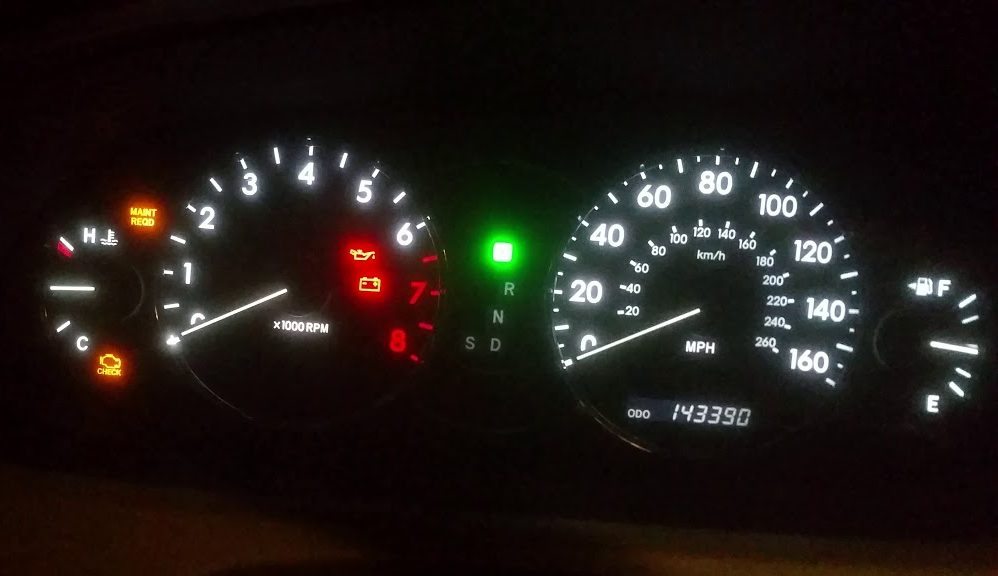
You’re driving down the road, minding your own business, and suddenly, the check engine light on your dashboard starts to glow. It’s a scenario that many of us have experienced, and it often sparks anxiety and uncertainty.
But fear not! The warning light is not always a harbinger of doom. It could be something that needs a minor fix. Therefore, what do you do when the check engine light comes on?
What to Do When Check Engine Light Comes On
Below are what to do when the check engine light comes on on your dashboard:
1. Don’t Panic, Remain Calm
The first thing to do when the check engine light illuminates your dashboard while driving is to remain calm. This is because, while a check engine warning light can be a sign of potential issues with your vehicle, it doesn’t necessarily indicate a catastrophic problem.
Modern vehicles are equipped with advanced diagnostic systems that monitor various sensors and components, and the check engine light can be triggered by a wide range of issues, from minor to more significant ones. Panicking won’t help, and it’s essential to approach the situation rationally.
2. Assess the Check Engine Light
Since the check engine light is your vehicle’s way of communicating that something is wrong with your engine, it is important to understand the nature of the problem, but the check engine light itself doesn’t provide specific details.
You need an OBD-II scanner to retrieve diagnostic trouble codes that triggered the light to come on. The scanner will tell you what caused the light to come on and what to fix.
Most auto parts stores offer free scanning services. You can also purchase a scanner for your personal use. Plug the scanner into your vehicle’s OBD-II port (usually located beneath the dashboard near the steering column) and retrieve the error codes. These codes will give you a better idea of what’s causing the CEL light to come on.
3. Record the Diagnostic Trouble Codes
Once you’ve retrieved the error codes, make a note of them. These alphanumeric codes correspond to specific issues within your vehicle. While they won’t tell you exactly what’s wrong, they serve as a valuable starting point for diagnosing the problem.
Some common DTCs include P0300 which means a random engine misfire, P0171 fuel system is too lean, and P0420 catalytic converter efficiency below threshold. Having these codes recorded will be useful to fix the car.
4. Check for Immediate Issues
After recording the DTCs, conduct a quick visual inspection under the hood. Look for any loose or disconnected wires, hoses, or components.
Sometimes, the check engine light can be triggered by a loose gas cap, so make sure it’s properly sealed. While this step won’t address all issues, it might resolve simple problems and clear the light.
5. Clear the Code and Drive the Car
After you are done reading the error codes with the scanner, clear the codes and drive your car to see if the check engine light will come back on again.
The reason why you should do this is because sometimes, the car’s computer can detect a false problem and trigger a code that will prompt the light to come on.
Clearing the code and driving the car will enable you to verify if the problem is real or false. However, for you to be able to do this, depends on the kind of problem the engine is having.
For example, if after scanning the car the system tells you that something is wrong with your oil pressure pump, you need to address the issue immediately because of how sensitive the problem is.
However, if after the driving, the warning light comes back on again, then, you have a serious problem that needs to be fixed.
6. Fix the Problem that Caused the Light
Once you have a better understanding of the problem, you have a few options for addressing it:
- DIY Repairs: If you’re experienced with vehicle maintenance and the issue seems minor, you may choose to attempt a DIY repair. Common issues like a faulty oxygen sensor or a loose gas cap can often be resolved with basic tools and some automotive knowledge.
- Professional Mechanic: For more complex issues or if you lack the necessary skills and tools, it’s advisable to take your car to a mechanic where the problem will be fixed. They have the expertise and diagnostic equipment to accurately pinpoint and repair the problem. Providing them with the recorded error codes will help expedite the process.
- Warranty or Dealership Service: If your vehicle is still under warranty or you prefer dealership service, consider contacting your vehicle’s manufacturer or an authorized dealer for assistance.
7. Never Ignore The CEL Light
Never you ever ignore a check engine warning light. Ignoring the check engine light is not a wise course of action. While it’s true that the light may turn off on its own in some cases, it’s crucial to address the underlying issue.
Ignoring the problem can lead to reduced fuel efficiency, increased emissions, and potentially more extensive damage that could be costlier to repair in the long run.
Conclusion
The check engine light is a source of anxiety for many drivers, but it doesn’t have to be. With a calm and systematic approach, you can effectively address the issue and keep your vehicle in good working order. Remember, the CEL is your vehicle’s way of communicating that something needs attention.
Whether you choose to diagnose and repair it yourself or seek professional assistance, taking the CEL seriously will help ensure the long-term health and reliability of your vehicle. In the end, the check engine light is not a cause for panic but an opportunity to keep your vehicle in its best possible condition.

